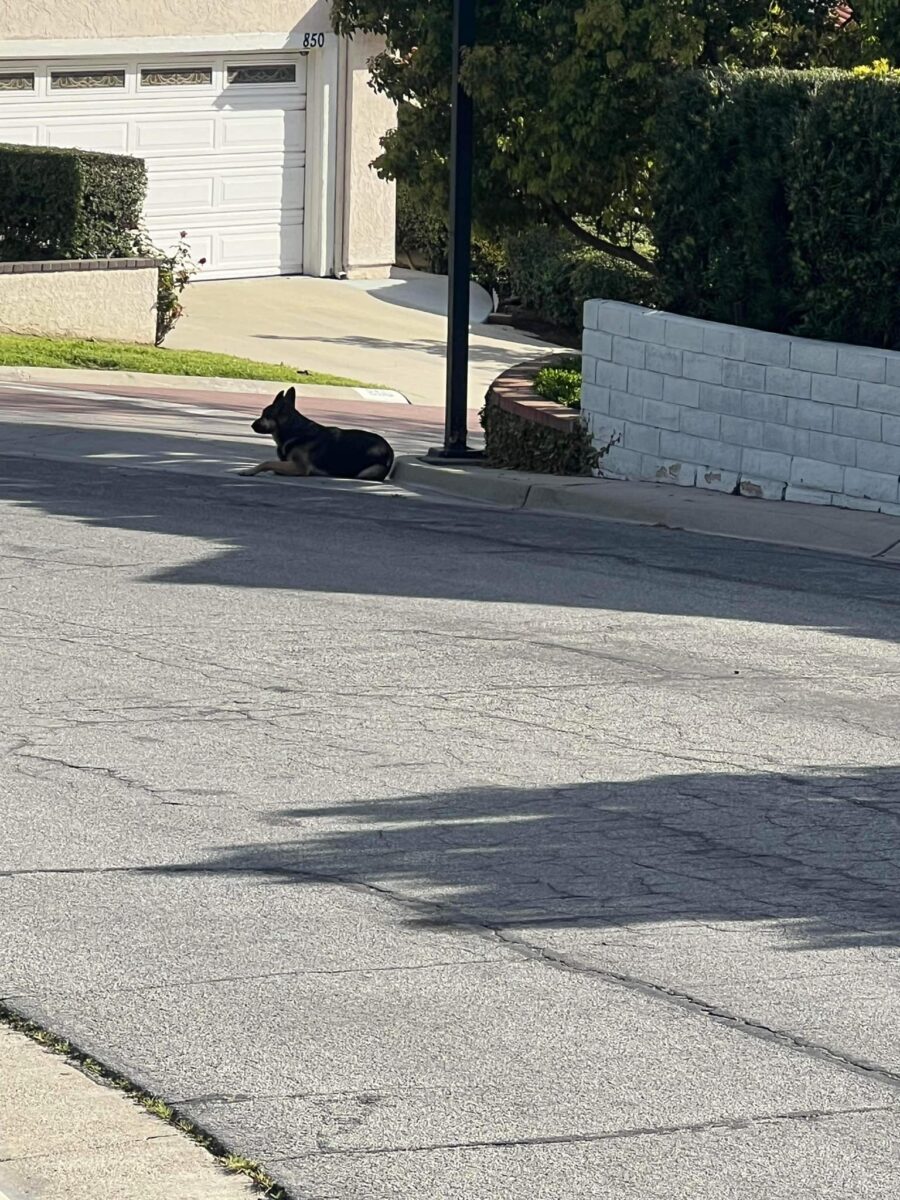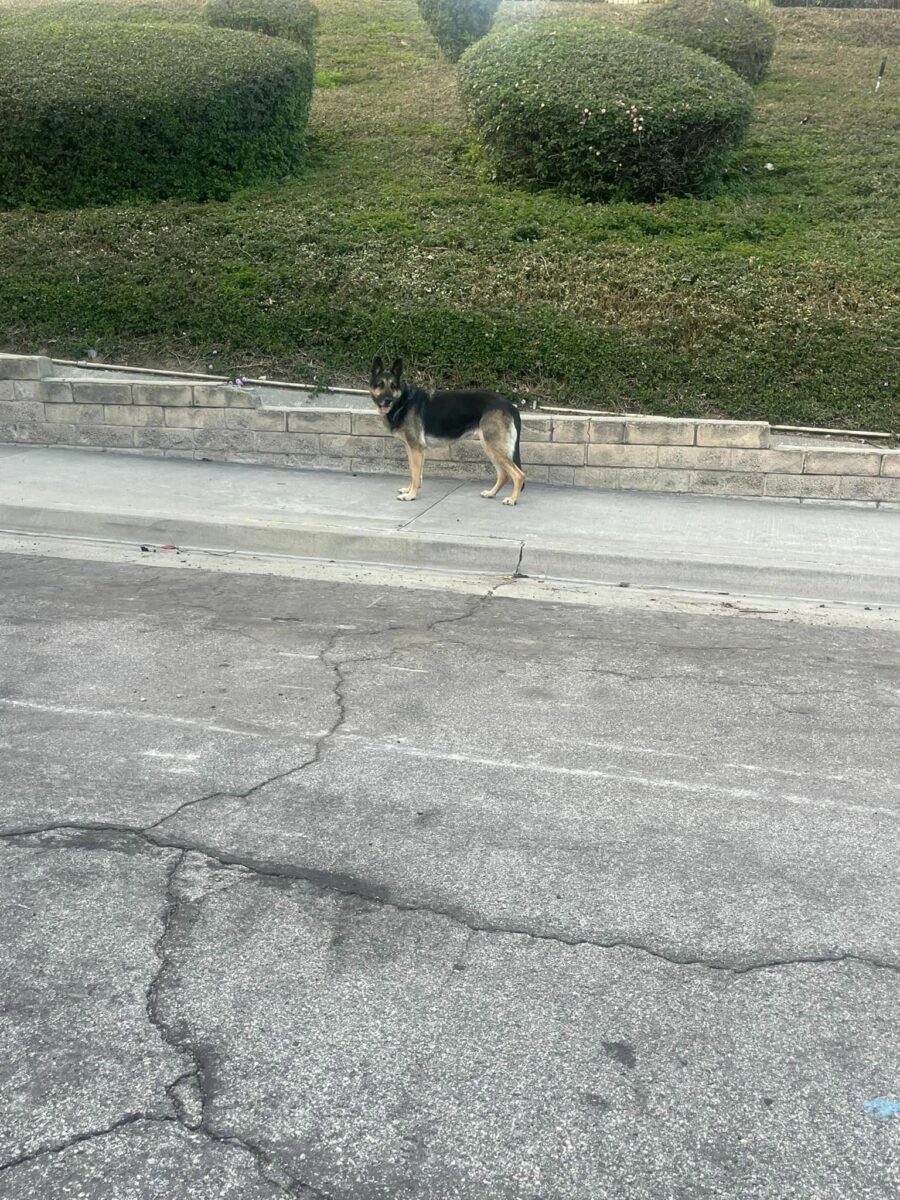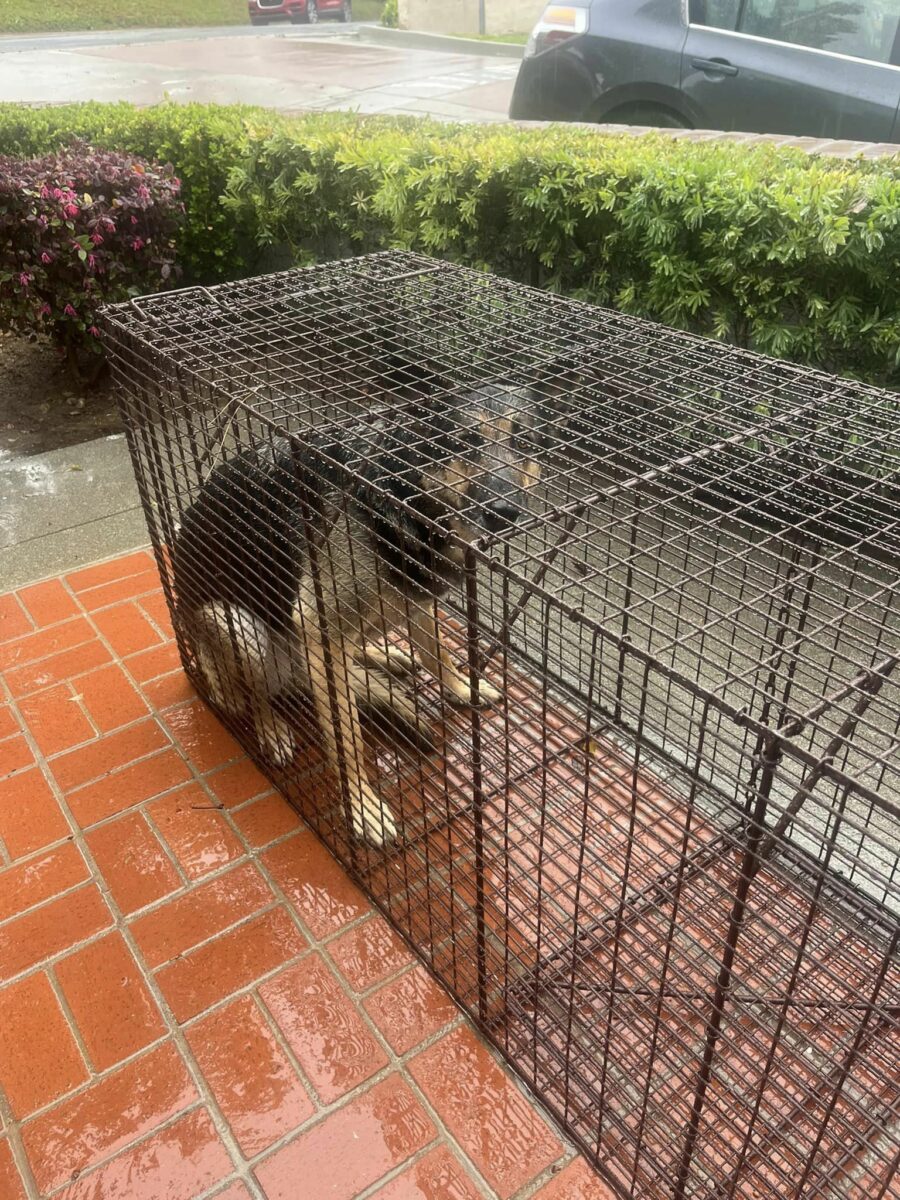Sometimes, I wonder: do people who abandon their pets on the street ever consider what happens to them?
Are they hungry? Where do they find shelter? Do they even survive?
It’s possible that these individuals quickly forget they ever owned a pet, but sadly, that pet doesn’t forget the pain and betrayal so easily.
Sometimes, despite the cruel act of abandonment, these poor dogs still wait for their previous owners, refusing to believe that their beloved have humans left them.
They spend days and nights, months, and even years in the same place they were dumped, hoping to see a familiar face once again. It’s heartbreaking, but tragically, it’s a harsh reality that many rescuers face every single day.
A Heartwarming Rescue

This sweet German Shepherd girl appeared in a neighbourhood in the City of Brea, California in March 2024.
It was evident that someone clearly dumped her there to fend for herself. Abandoned and alone, she stayed and waited at the same corner, clinging to the hope that her owner would return for her.
In the hardest of times, her loyalty remained unwavering to the core – a true testament to the nature of these remarkable dogs.
As the sun would start to set, this beautiful girl would seek shelter in one of the neighbouring courtyards, sleeping in the same spot every single night.

Thankfully, the homeowners cared for her, leaving food and water, but they couldn’t catch her because she was scared.
“They left out food and water and worried about her. This sweet Shepherd even held her own and fought off two coyotes,” Suzette Hall, a local rescuer from Irvine, California, wrote in her Facebook post.
That’s when the kind people decided to call for help, worried that she wouldn’t survive for too long on her own. They couldn’t just sit and wait for something bad to happen to this poor girl.
Quickly, they reached out to Suzette, an experienced rescuer and the founder of Logan’s Legacy 29 rescue.
Rescued In Loving Memory

When Suzette saw that it was a Shepherd dog, her heart simply broke. Her only son Logan loved all dogs, but especially Shepherds – they were what she liked to call his “heart dogs.”
After she lost Logan to a rare heart condition, Suzette founded Logan’s Legacy 29 animal rescue to keep his memory alive.
Soon after they contacted her, Suzette arrived at the location. She saw this sweet baby girl tired from waiting on the street.
They tried to trap her, but she got scared and ran away from them. After everything she had been through, she just didn’t know she could trust these strangers.
Sadly, during the night the rain started to fall.
Wet, cold from the rain, and hungry, she once again sought refuge on the homeowner’s porch.
Luckily this time they were able to catch her quickly.

“I drove up there and just felt in my heart today was her day. She was awake and hungry. Cold from the rain. We set my trap and we all hid. It wasn’t even 5 minutes before this sweet girl was safe in my trap. We cried and hugged,” Suzette said.
They moved her out of the rain, happy that she was finally safe and will soon receive help she needs.
She doesn’t need to worry about coyotes anymore, or if she will go to sleep with an empty stomach.
Hopefully, she’ll soon find her forever home and people who will love and cherish her forever.
If you’ve ever noticed your furry friend chasing its tail, you’re not alone. It’s a common sight that can be both amusing and puzzling. Tail-chasing behavior in dogs can range from playful antics to potential signs of underlying issues. As a seasoned dog trainer, I’ve seen my fair share of tail-chasing pups and understand the curiosity it sparks.
Watching your dog nip at its tail can raise questions about why they engage in this behavior. From boredom to anxiety, there are various reasons why dogs may turn in circles after their tails. In this article, we’ll explore the intriguing world of tail-biting in dogs and shed light on the possible motivations behind this quirky habit.
Understanding Canine Behavior: Tail Biting
The Basics of Tail Biting in Dogs
Dogs biting their tails is a common behavior that can stem from various reasons, such as irritation, allergies, or even boredom. When a dog bites its tail excessively, it might signal an issue that needs attention. One reason for this behavior could be the dog trying to alleviate irritation, like itching or pain, in that area. It’s essential to observe your dog’s tail-biting habits to understand the underlying cause and address it promptly.
Psychological and Physical Triggers
Tail biting in dogs can also be triggered by psychological factors like stress, anxiety, or even compulsive behavior. If your dog is experiencing psychological distress, it may resort to tail biting as a coping mechanism. Additionally, certain physical conditions like flea infestations or skin allergies could lead to excessive tail biting. Paying attention to your dog’s overall well-being and seeking veterinary advice can help identify and address any underlying psychological or physical triggers causing this behavior.
Common Reasons Why Dogs Bite Their Tails
Parasites and Skin Issues
Dogs may bite their tails due to parasites like fleas or ticks. These pests can cause intense itching, leading the dog to nibble or chew at its tail to alleviate the discomfort. Skin issues such as dry skin or allergies can also trigger this behavior. If your dog is constantly biting its tail, it might be a sign to check for parasites or skin conditions that require treatment.
Behavioral and Compulsive Disorders
Behavioral issues like anxiety, boredom, or compulsive disorders can manifest in tail-biting behavior. Dogs may resort to biting their tails as a coping mechanism for stress or frustration. Compulsive disorders, such as tail chasing, can also contribute to this habit. Understanding your dog’s behavior and providing appropriate mental and physical stimulation can help address these underlying causes.
Atypical Reactions to Pain or Discomfort
Sometimes, dogs may bite their tails in response to pain or discomfort. This could be due to an injury, arthritis, or another underlying health issue. Dogs may try to soothe themselves by biting the source of pain, which can include their tails. If your dog exhibits sudden changes in tail-biting behavior, it’s essential to consult with a veterinarian to rule out any potential medical concerns and ensure your furry friend’s well-being.
Diagnosing Tail Biting in Canine Companions
When to Consult a Veterinarian
If your dog is consistently biting its tail despite efforts to stop it or if the tail-biting is accompanied by other concerning symptoms like inflammation, redness, or wounds on the tail, it’s time to consult a veterinarian. Persistent tail-biting can be a sign of underlying health issues, so early veterinary intervention is crucial to identify and address the root cause effectively.
Diagnostic Tests and Examinations
To determine the cause of your dog’s tail-biting behavior, a veterinarian may recommend various diagnostic tests and examinations. These can include skin scrapings to check for parasites like fleas or ticks, blood tests to assess overall health and check for allergies, as well as physical examinations to look for signs of injuries, skin conditions, or behavioral issues. By performing these tests, the vet can pinpoint the exact reason behind your dog’s tail-biting and develop a tailored treatment plan to alleviate the behavior and improve your furry friend’s well-being.
Treating Tail Biting in Dogs
Medical Interventions for Physical Causes
If your dog is persistently biting its tail and showing signs of inflammation, redness, or wounds, it’s crucial to seek veterinary help. Through diagnostic tests like skin scrapings, blood tests, and physical exams, the vet can identify any underlying physical issues causing the behavior. Treatment plans tailored to your dog’s specific needs can then be developed for their well-being.
Behavioral Therapies for Compulsive Behavior
In cases where tail biting is linked to behavioral issues, interventions like behavioral therapies can be beneficial. Working with a professional trainer or behaviorist can help address compulsive behaviors in dogs. These experts can provide guidance on how to manage and modify your dog’s behavior positively to reduce or eliminate tail biting tendencies.
Preventing Tail Biting from Recurring
Regular Health Check-Ups and Preventive Care
For preventing your dog from a recurring tail-biting problem, make sure to schedule regular health check-ups with your vet. Routine check-ups can help in early detection of any underlying health issues that might be causing your dog to bite its tail. Your veterinarian can recommend preventive care measures tailored to your dog’s specific needs, ensuring their overall well-being.
Environmental Enrichment and Mental Stimulation
To prevent your dog from getting bored and resorting to tail biting, focus on providing environmental enrichment and mental stimulation. Engage your dog with interactive toys, puzzle feeders, and outdoor activities to keep them mentally and physically active. A stimulated environment can reduce boredom and anxiety, decreasing the likelihood of your dog chasing or biting its tail.
Conclusion
So, there you have it – a tail of tail-chasing pups! Remember, your furry friend might be nibbling on their tail due to various reasons like boredom, anxiety, or even health issues. It’s crucial to keep an eye on their behavior and seek help from a vet if needed. By staying proactive with regular check-ups and providing a stimulating environment, you can help your dog stay happy and tail-bite free. Keep those tails wagging!
Frequently Asked Questions
Why do dogs chase their tails?
Dogs may chase their tails due to boredom, anxiety, irritation, allergies, or stress. Tail-chasing can indicate underlying issues like itching, pain, or psychological distress.
What factors can cause tail-biting in dogs?
Factors like parasites (fleas or ticks), skin problems, behavioral issues (anxiety, compulsive disorders), and atypical reactions to pain (injuries, health conditions) can lead to tail-biting.
When should I consult a veterinarian for tail-biting behavior?
Consult a vet if your dog persistently bites its tail, especially if accompanied by inflammation, redness, or wounds. Diagnostic tests and examinations are recommended to identify underlying health issues and develop a treatment plan.
How can I prevent tail-biting in dogs?
Prevent tail-biting recurrence through regular health check-ups, preventive care, environmental enrichment, and mental stimulation to reduce boredom and anxiety that may lead to tail chasing or biting.
[no_toc]

Hey there, I’m Janet Brooks, a dog-loving student from California. I’m all about helping pups in need, especially those without homes. Me and my awesome friends work together to give shelter and love to stray dogs. Oh, and I also write blogs about dogs to share helpful info.